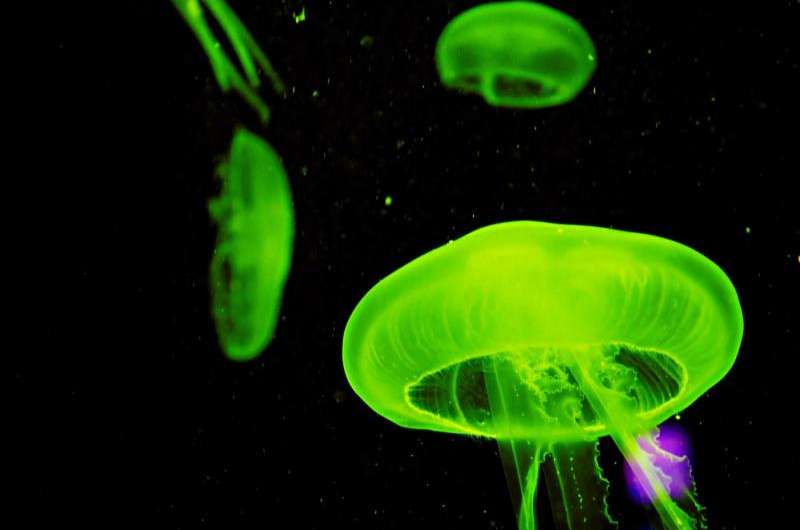Green fluorescent protein a potential scaffold for protein assembly

Scientists in Korea have developed a protein-scaffolding tool that paves the way for the assembly of diverse proteins with defined structures and functions.
Large protein assemblies have a wealth of potential uses, such as in drug and vaccine development or in the production of chemicals, fuels or agricultural additives. But the sheer complexity of protein structures makes it extremely challenging to understand and assemble them at a basic level.
That may be about to change, say scientists at the Korea Advanced Institute of Science and Technology (KAIST). Their findings form a big step in discovering better ways to build diverse protein assemblies with new structures and functions.
The KAIST team has developed a set of green fluorescent protein (GFP) assemblies with relatively simple, well-defined structures that can be powerful scaffolds for assembling other proteins.
GFP is a fluorescent protein composed of 238 amino acid residues. It is commonly found in some fluorescing marine animals such as jellyfish. Because of its fluorescent properties, making it easy to see, it has been widely used in research.
The team formed the scaffold by taking advantage of the fact that two different GFP units with specific chains of GFP amino acids can be spontaneously linked in a bacterial cell. A GFP monomer was designed to have these two linking units. This monomer then self-assembles with other GFP monomers to form polymers. The researchers discovered that each polymer was organized in a polygonal shape resembling a windmill with 2 to 10 blades, each blade representing a GFP monomer. A four-bladed polymer, for example, is composed of four monomers linked together to form a tetramer. The team was able to separate the polymers based on their sizes. Proteins were then genetically linked to the free ends of each GFP monomer "blade".
The team also showed that they could block one link in the polymer "windmill" to create linear chains of GFP units, up to 15 units in length. The researchers were able to link proteins to this new GFP open structure, demonstrating the ability to assemble proteins with varied spatial organisations.
Finally, the team successfully linked antibodies to their polygon and linear chain scaffolds; something that could, in the future, facilitate antibody delivery to cells.
This is the first time that researchers have managed to form discrete polygonal scaffold structures of functional proteins, allowing the precise spatial assembly of other proteins onto them.
The use of these discrete protein nanoscaffolds will be highly beneficial for future understanding and control of biological processes such as viral entry, cell-to-cell communications and immune responses, the researchers say.





















